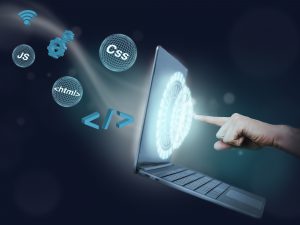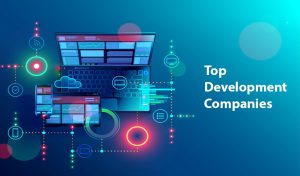In the age of rapid technological advancement, the line between human intelligence and artificial intelligence (AI) has become blurred. AI has made remarkable strides, but how does it stack up against the complexity and adaptability of the human mind? This blog will outline the differences and similarities between AI vs human intelligence, covering various aspects.
- Learning and Adaptation
Human Intelligence: Human intelligence is characterized by the ability to learn from experiences, adapt to new situations, and make decisions based on context and emotional understanding. Humans possess a remarkable capacity for abstract thinking, creativity, and problem-solving.
Artificial Intelligence: AI systems rely on algorithms and data to learn and adapt. Machine learning and deep learning techniques enable AI to analyze vast amounts of data and recognize patterns. While AI can excel in specific tasks, it lacks the broader cognitive abilities and emotional intelligence of humans.
- Creativity and Imagination
Human Intelligence: Humans are inherently creative beings. They can imagine, dream, and create art, literature, music, and innovations. Human creativity stems from emotions, experiences, and the ability to connect disparate ideas in novel ways.
Artificial Intelligence: AI can generate content, such as art and music, but it does so by analyzing existing data and patterns. While AI can be a valuable tool for creativity, it lacks the genuine inspiration, emotional depth, and originality that human creativity brings.
- Emotional Intelligence
Human Intelligence: Emotional intelligence is a quintessential aspect of human intelligence. It involves recognizing, understanding, managing, and expressing emotions. Humans have the ability to empathize, build relationships, and respond to emotional cues in nuanced ways.
Artificial Intelligence: AI lacks true emotional intelligence. While AI can recognize and respond to certain emotional cues through sentiment analysis, it does so based on predefined rules and patterns. AI lacks genuine emotions and the ability to form deep emotional connections.
- Problem-Solving and Critical Thinking
Human Intelligence: Humans excel in critical thinking and complex problem-solving. They can analyze multifaceted issues, consider various perspectives, and make decisions based on ethics, values, and moral reasoning.
Artificial Intelligence: AI can be highly effective in specific problem-solving tasks, especially those involving data analysis and optimization. However, it relies on predefined algorithms and data, and its problem-solving abilities are limited to the scope of its programming.
- Limitations and Bias
Human Intelligence: Human intelligence is susceptible to cognitive biases and limitations. These biases can influence decision-making and perception. Additionally, humans have finite cognitive capacities and require rest and nourishment.
Artificial Intelligence: AI systems can inherit biases present in their training data. They are also limited by their programming and lack the ability to make moral or ethical judgments beyond what is explicitly programmed.
- Continual Learning
Human Intelligence: Humans can continually learn and adapt throughout their lives. They can acquire new skills, knowledge, and adapt to changing circumstances.
Artificial Intelligence: AI requires constant updates and retraining to stay relevant and effective. It doesn’t possess the intrinsic ability to learn and grow autonomously as humans do.
Comparison table artificial intelligence versus human intelligence
| Aspect | Human Intelligence | Artificial Intelligence |
| Learning and Adaptation | Learns from experiences, adapts, and makes context-based decisions | Learns from data and patterns using algorithms |
| Creativity and Imagination | Possesses creativity, imagination, and emotional depth | Generates content based on existing data and patterns |
| Emotional Intelligence | Recognizes, understands, and responds to emotions, builds relationships | Recognizes emotions through analysis but lacks genuine emotions |
| Problem Solving | Excels in critical thinking, moral reasoning, and complex problem-solving | Effective in specific problem-solving tasks based on programming |
| Limitations and Bias | Susceptible to cognitive biases, finite cognitive capacity | May inherit biases from training data, limited by programming |
| Continual Learning | Can continually learn and adapt throughout life | Requires constant updates and retraining to stay relevant |
What is the Future of Human vs AI?
The future of the relationship between humans and artificial intelligence (AI) holds several exciting possibilities and challenges. Here are some key aspects of the future of human vs AI interaction:
- Collaboration and Augmentation: The future will likely see an increasing trend of collaboration between humans and AI. AI can augment human capabilities by automating routine tasks, providing insights from data, and enhancing decision-making processes. In fields like healthcare, finance, and manufacturing, AI can work alongside humans to improve efficiency and accuracy.
- AI in Education: AI-powered educational tools will become more prevalent, allowing personalized learning experiences. AI can adapt to individual learning styles and provide real-time feedback, making education more effective and accessible.
- Ethical Considerations: As AI becomes more integrated into society, ethical considerations will be paramount. Ensuring AI systems are unbiased, transparent, and respect human values will be a significant challenge. Regulations and guidelines will evolve to address these concerns.
- Employment and Workforce: The widespread adoption of AI may lead to shifts in the job market. While some routine jobs may be automated, new roles focused on AI development, maintenance, and oversight will emerge. Lifelong learning and adaptability will be essential for the workforce.
- AI in Healthcare: AI will play a crucial role in healthcare, aiding in diagnosis, treatment recommendations, drug discovery, and patient monitoring. The future may see AI-driven precision medicine tailored to an individual’s genetic makeup and health history.
- AI and Creativity: AI will continue to generate creative content, such as art, music, and literature. However, the authenticity and emotional depth of human creativity will remain distinct. Collaborations between humans and AI in creative endeavors may become more common.
- AI in Research and Science: AI will accelerate scientific discoveries by processing vast datasets, simulating experiments, and identifying patterns in complex systems. Fields like astronomy, genomics, and climate science will benefit from AI-driven research.
- Human-AI Trust and Understanding: Building trust in AI systems and fostering public understanding of AI will be essential. Transparency, explainability, and clear communication about AI’s capabilities and limitations will be crucial.
- AI in Governance and Policy: Governments and policymakers will need to adapt regulations and policies to address the ethical, legal, and societal implications of AI. This includes issues related to data privacy, security, and AI-driven decision-making.
- AI and Personalization: AI will continue to enhance personalization in various aspects of life, from entertainment and shopping recommendations to healthcare treatments and financial advice.
The future of human vs AI is likely to involve a symbiotic relationship where humans and AI systems complement each other’s strengths and address various challenges. While AI will transform many aspects of society and industry, the role of human creativity, ethics, and decision-making will remain essential in guiding and shaping the responsible development and use of AI technologies.
Will AI Replace Humans?
AI has the potential to automate many tasks and processes that were traditionally performed by humans. However, the question of whether AI is for future or not and will it completely replace humans is complex and multifaceted. Here are some key points to consider:
- Task Automation: AI has already demonstrated its ability to automate routine and repetitive tasks efficiently. In industries like manufacturing and customer service, robots and AI systems have taken over certain roles. This automation can improve efficiency and reduce costs.
- Augmentation, Not Replacement: In many cases, AI is more likely to augment human capabilities rather than outright replace humans. AI can assist humans in decision-making, provide insights from vast datasets, and handle mundane tasks, allowing humans to focus on more creative and complex aspects of their work.
- New Job Roles: While AI may automate some jobs, it can also create new job opportunities. The development, maintenance, and oversight of AI systems require human expertise. Additionally, industries related to AI research and development are expected to grow
- Complex and Creative Tasks: AI struggles with tasks that require complex decision-making, creativity, emotional intelligence, and ethical judgment. These are areas where human capabilities are difficult to replicate.
- Ethical and Social Considerations: Replacing humans with AI in certain roles raises ethical and social concerns. For example, in healthcare, while AI can assist in diagnosis and treatment, the importance of human empathy and the doctor-patient relationship cannot be overlooked.
- Human Adaptability: Humans have a unique ability to adapt to a wide range of tasks and situations. Unlike AI, which is specialized for specific tasks, humans can learn new skills and pivot to different roles throughout their lives.
- Dependence on Technology: Relying too heavily on AI and automation can also pose risks, such as vulnerability to system failures, cybersecurity threats, and a loss of essential human skills.
- Collaboration: The most promising future likely involves collaboration between humans and AI. Humans can provide the judgment, creativity, and ethical considerations while AI offers data-driven insights and automation.
In conclusion, while AI is reshaping the workforce and automating certain tasks, it is unlikely to completely replace humans across all domains. The more realistic scenario is one of coexistence and collaboration, where humans and AI systems work together to achieve greater efficiency and address complex challenges. The extent to which AI replaces or augments humans will vary by industry and job role, but the role of humans in guiding, controlling, and providing the ethical framework for AI remains essential.
Conclusion
In the ongoing debate of human intelligence versus artificial intelligence, it’s clear that each has its own strengths and weaknesses. Human intelligence excels in creativity, emotional intelligence, and complex problem-solving, while AI shines in data-driven tasks and automation. As AI continues to advance, it’s important to recognize that it complements rather than replaces human intelligence. The most promising future lies in the collaboration between human intelligence and artificial intelligence, harnessing the strengths of both to address the complex challenges of our world.


